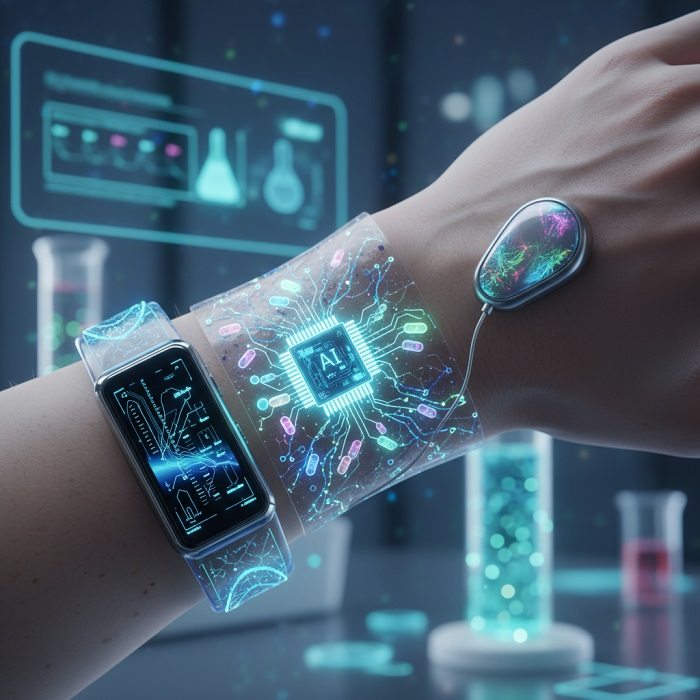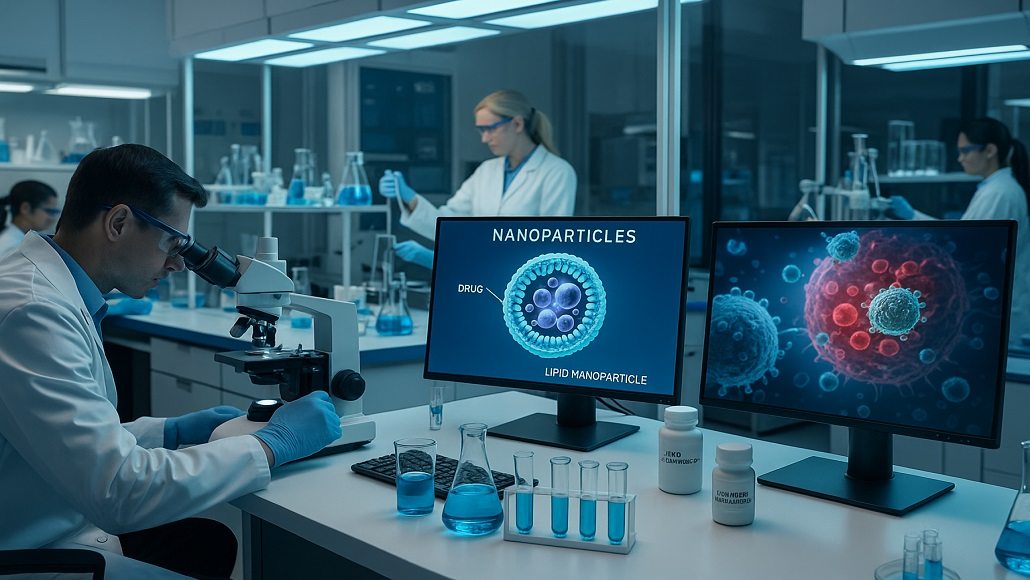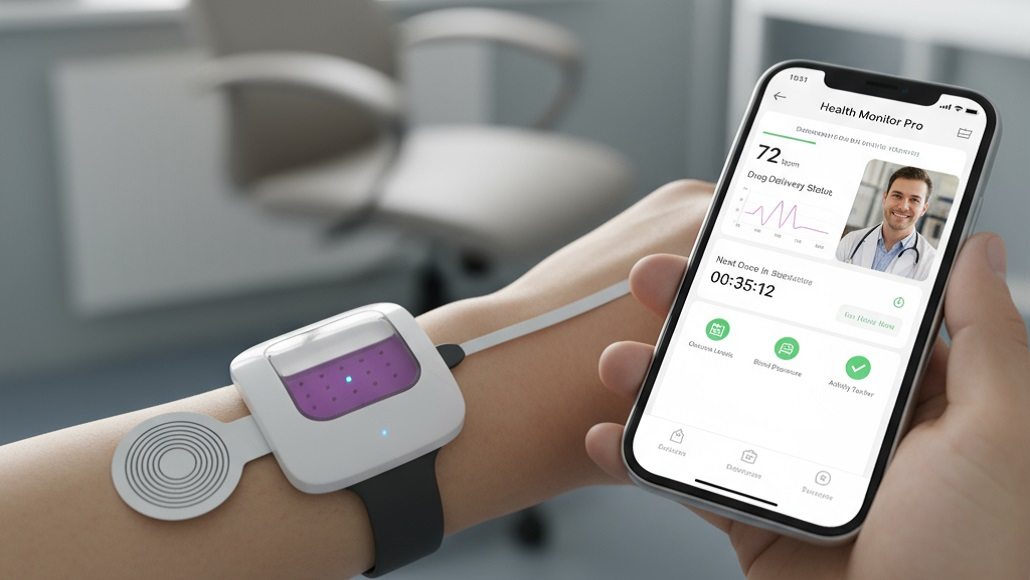Wearable Drug Delivery Devices Enabling On-Demand Therapeutics
The healthcare landscape undergoes revolutionary transformation as wearable drug delivery devices emerge as paradigm-shifting technologies that enable on-demand therapeutics delivery with unprecedented patient convenience and clinical effectiveness. These sophisticated platforms represent convergence of advanced materials science, miniaturized electronics, and precision engineering to create therapeutic solutions that integrate seamlessly into patients’ daily lives while providing precise medication administration when needed most. The evolution from traditional drug delivery methods to intelligent wearable systems signifies fundamental shifts toward patient-centered healthcare that prioritizes autonomy, comfort, and therapeutic optimization.
Wearable drug delivery devices encompass diverse technological approaches designed to provide flexible, patient-controlled therapeutic administration across various medical conditions and treatment scenarios. These systems utilize advanced sensor technologies, wireless connectivity, and automated control algorithms to deliver medications with timing precision that aligns with physiological needs and disease progression patterns. The integration of real-time monitoring capabilities enables healthcare providers to track patient responses, optimize treatment protocols, and intervene proactively when therapeutic modifications become necessary.

Technological Architecture and System Integration
Modern wearable drug delivery devices incorporate sophisticated microfluidic systems that enable precise control over medication flow rates and delivery patterns. These miniaturized platforms utilize micropumps, microvalves, and microscale reservoirs fabricated using advanced semiconductor manufacturing techniques. The integration of multiple microfluidic channels enables simultaneous delivery of different therapeutic agents or sequential administration of combination therapies with programmable timing intervals.
Sensor integration represents a fundamental component of intelligent wearable systems that enable responsive therapeutic delivery based on physiological feedback. Biosensors continuously monitor critical parameters including glucose levels, blood pressure, heart rate, and biomarker concentrations to trigger appropriate therapeutic responses. Advanced sensor fusion algorithms combine multiple physiological signals to provide comprehensive patient status assessments that inform automated dosing decisions.
Wireless connectivity features enable real-time communication between wearable devices and healthcare management systems, providing continuous monitoring capabilities and remote therapeutic oversight. Bluetooth Low Energy and cellular communication protocols enable data transmission while minimizing power consumption to maximize device operational duration. Cloud-based data analytics platforms process patient information to identify treatment patterns and optimize therapy protocols.
Battery technologies represent critical enabling components that determine device functionality and patient acceptance through operational duration and recharging requirements. Advanced lithium-polymer batteries provide high energy density while maintaining compact form factors suitable for wearable applications. Energy harvesting technologies including kinetic energy capture and wireless power transfer offer opportunities to extend operational duration or eliminate recharging requirements entirely.
User interface design prioritizes intuitive operation that accommodates diverse patient populations including elderly individuals with limited technology experience and visually impaired users requiring accessibility features. Tactile feedback systems and audio prompts guide patients through device operation while minimizing complexity and potential user errors. Mobile application interfaces provide comprehensive device management capabilities while maintaining user-friendly operation.
Patient-Centered Design and Usability Optimization
Ergonomic considerations ensure wearable devices accommodate extended wear periods without causing discomfort or interfering with normal activities. Lightweight materials and distributed weight configurations minimize perceived device presence while maintaining structural integrity and functionality. Flexible substrates and conformal designs adapt to body contours while providing secure attachment and stable therapeutic delivery.
Discrete form factors enable inconspicuous wear under clothing, preserving patient privacy and dignity during treatment periods. Miniaturized components and integrated designs eliminate visible tubing or external connections that could reveal medical conditions to observers. Color and texture selections blend with skin tones and clothing options to minimize visual detection by others.
Adhesion systems utilize medical-grade materials that provide secure attachment without causing skin irritation or allergic reactions during extended wear periods. Breathable adhesives and moisture-wicking materials maintain skin health while preventing device displacement during physical activities. Hypoallergenic formulations accommodate patients with sensitive skin conditions or adhesive allergies.
Water resistance features enable device use during daily hygiene routines and light physical activities without compromising functionality or safety. Sealed electronic components and protected access ports prevent moisture ingress while maintaining user accessibility for device management. Advanced materials provide chemical resistance to common personal care products and environmental contaminants.
Temperature regulation systems maintain optimal operating conditions for both device components and medication stability throughout varying environmental conditions. Thermal insulation and heat dissipation features protect sensitive electronics while preventing skin heating that could cause patient discomfort. Medication temperature monitoring ensures therapeutic potency throughout delivery periods.
Advanced Therapeutic Applications and Clinical Benefits
Diabetes management represents one of the most successful applications of wearable drug delivery technology through continuous glucose monitoring integration with automated insulin delivery systems. These closed-loop systems demonstrate superior glycemic control compared to traditional injection methods while reducing patient management burden and hypoglycemia risks. Advanced algorithms predict glucose trends and adjust insulin delivery proactively to maintain optimal blood sugar levels.
Pain management applications utilize wearable devices to provide patient-controlled analgesia that adapts to activity levels and pain patterns. These systems incorporate pain assessment algorithms that monitor physiological indicators including heart rate variability, skin conductance, and movement patterns to detect pain episodes and adjust medication delivery accordingly. Breakthrough pain management protocols enable rapid therapeutic intervention while maintaining safety limits.
Oncology applications leverage wearable technology to provide continuous chemotherapy administration that optimizes therapeutic exposure while minimizing systemic toxicity. Ambulatory infusion systems enable patients to receive treatment at home while maintaining normal activities, improving quality of life during therapy periods. Real-time monitoring capabilities enable early detection of adverse reactions and prompt clinical intervention.
Hormone replacement therapies utilize wearable devices to provide physiological hormone delivery patterns that mimic natural circadian rhythms and physiological feedback loops. These systems can adjust hormone levels based on biomarker measurements and patient activity patterns to optimize therapeutic outcomes while minimizing side effects associated with traditional dosing regimens.
Psychiatric medication delivery through wearable systems enables optimized dosing strategies that account for symptom fluctuations and environmental stress factors. Mood monitoring capabilities through physiological sensor data enable proactive dose adjustments that prevent symptom exacerbation while maintaining therapeutic effectiveness throughout treatment periods.
Clinical Outcomes and Evidence Generation
Randomized controlled trials demonstrate superior patient adherence rates with wearable drug delivery devices compared to traditional administration methods across diverse therapeutic areas. These studies document improved treatment compliance through elimination of dosing complexity and reduced administration burden for patients managing chronic conditions requiring frequent medication administration.
Quality of life assessments consistently show improvements in patient-reported outcomes including treatment satisfaction, daily functioning, and psychological well-being when utilizing wearable delivery systems. These benefits derive from increased treatment convenience, reduced clinic visits, and improved symptom control through optimized dosing strategies enabled by continuous monitoring and automated delivery.
Healthcare utilization studies document reduced emergency department visits and hospitalizations among patients using wearable drug delivery systems compared to conventional treatment approaches. These improvements result from better disease control, early intervention capabilities, and proactive management of therapeutic complications through real-time monitoring and automated dose adjustments.
Economic analyses demonstrate cost-effectiveness of wearable delivery systems through reduced healthcare utilization, improved treatment outcomes, and enhanced patient productivity. While initial device costs may exceed traditional delivery methods, long-term cost savings through improved outcomes and reduced complications provide favorable economic profiles for healthcare systems and patients.
Real-world evidence studies track long-term outcomes and device performance across diverse patient populations to identify optimization opportunities and inform clinical practice guidelines. These studies provide insights into device reliability, patient satisfaction, and therapeutic effectiveness that guide future technology development and clinical implementation strategies.
Regulatory Frameworks and Safety Considerations
Device classification and approval pathways require comprehensive safety and efficacy evaluations that address unique risks associated with wearable drug delivery systems. Regulatory agencies evaluate device design, manufacturing quality, software validation, and clinical performance through rigorous review processes that ensure patient safety while enabling innovation access.
Cybersecurity requirements address data privacy and device security concerns associated with connected medical devices that transmit sensitive health information. Encryption protocols, authentication systems, and secure communication channels protect patient data while enabling necessary connectivity features for therapeutic optimization and clinical oversight.
Post-market surveillance programs monitor device performance and safety outcomes across real-world usage conditions to identify potential issues and inform safety updates or design modifications. These programs enable continuous improvement of wearable delivery systems while maintaining patient safety through proactive risk management.
International harmonization efforts standardize safety requirements and testing protocols for wearable drug delivery devices across global markets. These initiatives facilitate technology access while ensuring consistent safety standards regardless of geographic location or regulatory jurisdiction.
Risk management systems incorporate hazard analysis and risk assessment methodologies that identify potential failure modes and implement appropriate safeguards to prevent patient harm. These systems address both device-related risks and therapeutic risks associated with automated medication delivery in unsupervised environments.
Future Innovation Directions and Emerging Technologies
Artificial intelligence integration enables predictive therapeutic delivery that anticipates patient needs based on historical patterns, physiological trends, and environmental factors. Machine learning algorithms continuously improve dosing strategies through analysis of patient responses and outcome data, providing increasingly personalized therapeutic optimization over time.
Nanotechnology applications enable development of ultra-miniaturized delivery systems that provide therapeutic capability within increasingly discrete form factors. Nano-scale sensors and actuators enable monitoring and delivery precision that approaches cellular-level targeting while maintaining compatibility with wearable device platforms.
Biocompatible materials development focuses on creating device components that integrate seamlessly with biological systems to minimize foreign body responses and enable extended implantation periods. These materials may enable semi-permanent or permanent device placement that eliminates external components while maintaining therapeutic functionality.
Multi-drug delivery capabilities enable wearable systems to administer multiple therapeutic agents with coordinated timing and dosing strategies. These platforms address complex medical conditions requiring combination therapies while simplifying patient management through integrated delivery systems that eliminate multiple device requirements.
Personalized medicine integration utilizes genetic testing, biomarker analysis, and patient-specific physiological modeling to optimize wearable device programming for individual patient characteristics. These approaches promise unprecedented therapeutic precision through customized delivery algorithms that account for individual pharmacokinetic and pharmacodynamic profiles.
As wearable drug delivery technology continues evolving through ongoing research and development investments, the future holds promise for increasingly sophisticated systems that provide therapeutic capabilities approaching those of implanted devices while maintaining patient convenience and autonomy. These advances will expand treatment options for patients with chronic conditions while reducing healthcare system burden through improved outcomes and enhanced treatment efficiency across diverse medical applications.





























